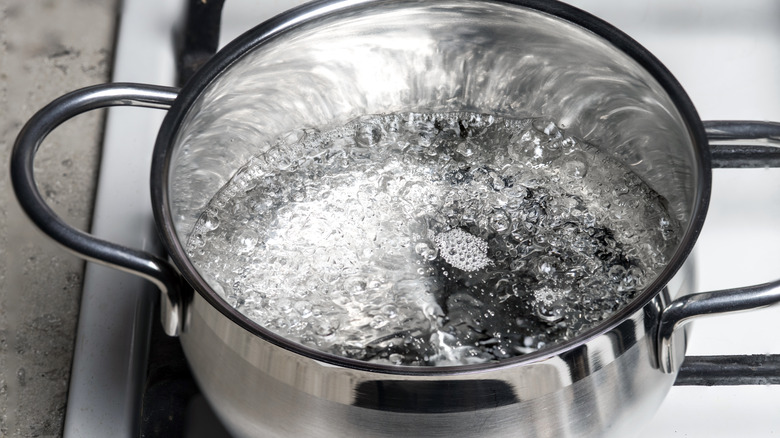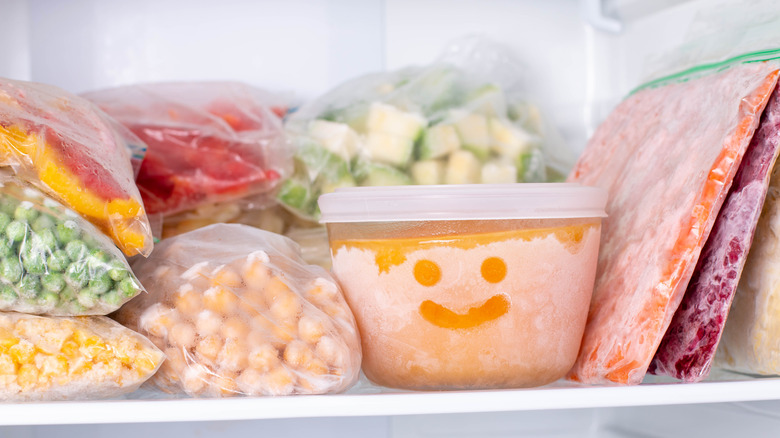The Step You Shouldn't Skip When Cooking Frozen Broccoli
Broccoli is one of those vegetables that can span the spectrum from amazing to awful depending on how it is prepared. And frozen broccoli has a notoriously bad reputation. Cooked fresh, however, broccoli can offer a pleasant variety of textures in every bite, from the crispy florets to the firm stalk. But when cooked from frozen, broccoli can become a mushy mess. This doesn't always have to be the case. The key to reviving frozen broccoli? Blanch it.
The process of blanching vegetables is quick, easy, and often overlooked. It can be tempting to skip this step, but try it out and you will find that all you need to transform frozen broccoli into something delicious is a few minutes and a pot of boiling water. This process can also be used for other frozen vegetables, such as carrots and cauliflower, though the blanching time will vary depending on the vegetable.
How to blanch your frozen veggies
There are two forms of blanching: water blanching and steam blanching. Both processes are very similar and simple, requiring just a few minutes of your time and some basic kitchen equipment. To start, you will bring a large pot of water to boil on the stovetop.
To water blanch your frozen broccoli, pour it directly into the pot and wait for the water to return to a boil before setting a timer for three minutes. Allow the broccoli to cook, then remove using a slotted spoon. To steam blanch frozen broccoli, you will need a pot with a steam basket and lid. Once the water has begun to boil, place the broccoli evenly along the bottom of the basket, cover the pot tightly with the lid, and cook for five minutes. Both methods work well for preparing frozen broccoli for cooking, though some vegetables will fare better with one or the other.
Benefits of blanching vegetables
Buying frozen vegetables can be so much easier than opting for fresh and, luckily, there are plenty of good reasons to do so. In fact, frozen broccoli may be more nutritious than fresh and will remain edible for an extended period of time without added preservatives. It is important to note, however, that blanching is a quick process and if vegetables are left in hot water for too long, it can result in a loss of vitamins. But if done correctly, blanching is ideal for reviving the best qualities of any frozen vegetable. For broccoli, just a few minutes of blanching brings out a bright, springtime-green color. Definitely not looking like something left in the back of the freezer.
Once you have blanched your frozen broccoli at home, you can eat it as is with a little olive oil or butter and salt, or you can proceed to cook with it. Blanched vegetables have a nice crunch like raw produce, so if you prefer your veggies slightly crispy on the outside, but softer on the inside, you may want to consider sautéing them in a pan or roasting them in the oven along with your favorite spices and herbs.



